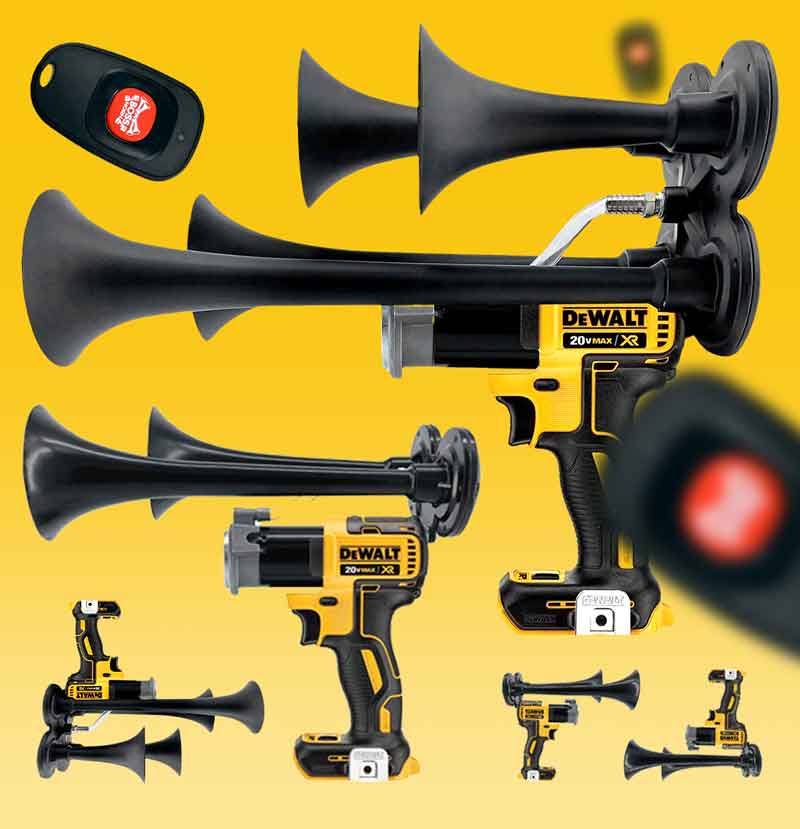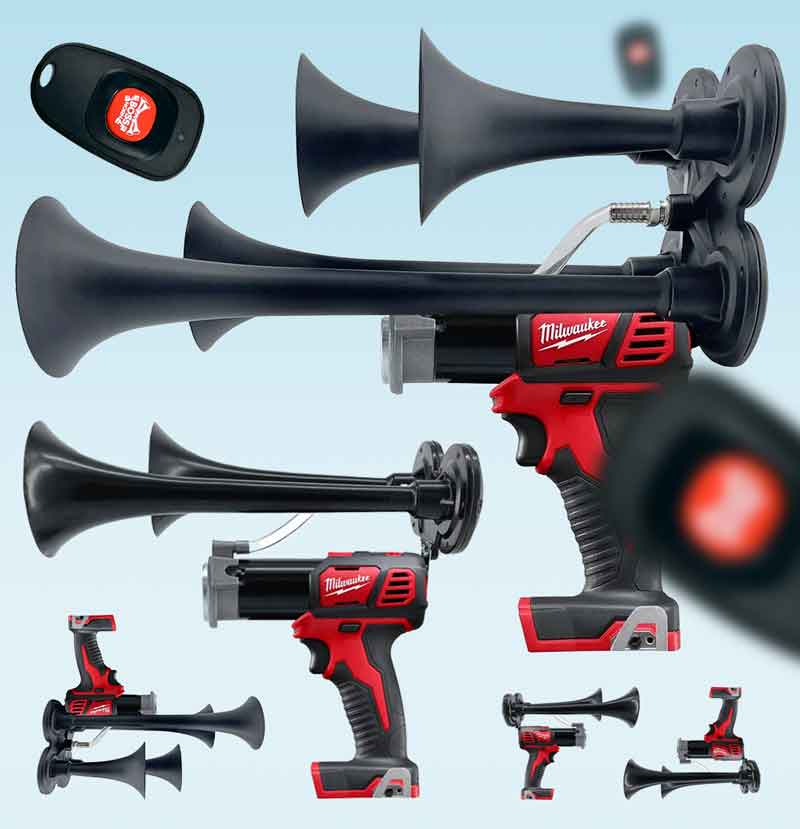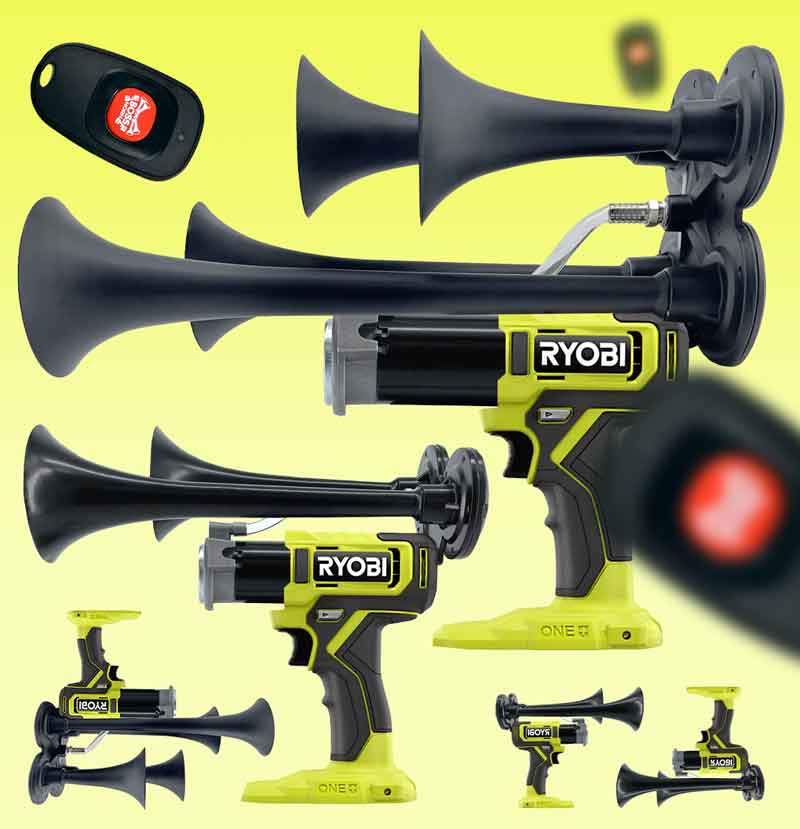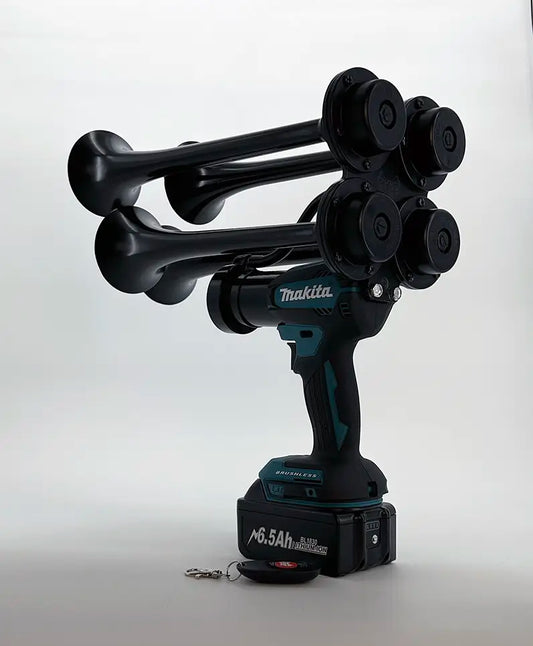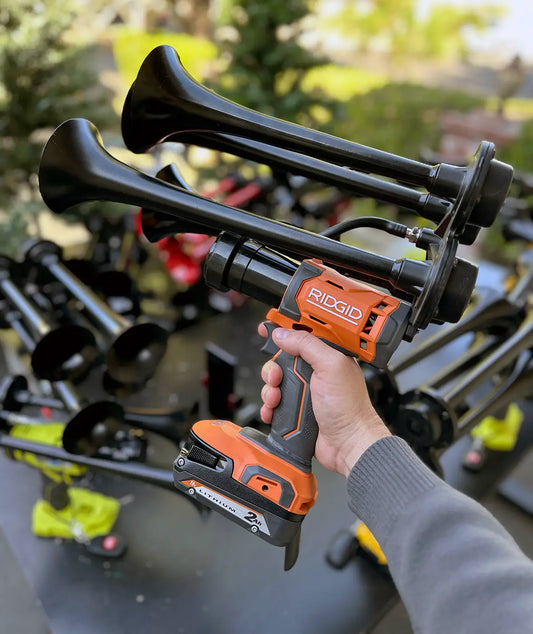The drill blow horn, also known as the portable air horn, has a loud, attention-grabbing sound that has been used for various purposes throughout history. This simple yet effective device is capable of producing a sound that can be heard from great distances, making it an incredibly useful tool in emergency situations or for signaling in large gatherings. Its current significance lies in its ability to provide a quick and efficient way to attract attention and communicate important messages.
Dating back to ancient times, similar devices were used to signal military troops or convey messages across long distances. Over the years, the design and technology behind the drill blow horn have evolved, resulting in a more practical and user-friendly device. Today, the compact and portable nature of the drill blow horn allows for easy transportation and accessibility in a variety of situations.
One compelling statistic associated with the drill blow horn is its decibel output. On average, a standard drill blow horn can produce a sound that reaches up to 120 decibels, which is equivalent to the noise level of a rock concert. This high decibel level ensures that the sound is not only attention-grabbing but also capable of cutting through background noise and capturing the attention of individuals even in loud or chaotic environments.
In emergency situations where sound is crucial, the drill blow horn provides a reliable and efficient solution. Its piercing sound can alert nearby individuals of danger or signal for assistance, potentially saving lives in critical moments. Additionally, in large gatherings such as sporting events or concerts, the drill blow horn can be used to convey important messages or organize participants, enhancing overall safety and organization.
The drill blow horn's current significance lies in its ability to provide a quick and effective means of communication in various contexts. From emergency situations to organized events, its loud and distinct sound ensures that messages are heard and attention is captured. With its rich history and ongoing relevance, the drill blow horn remains a valuable tool for communication and safety.
What are the benefits of using a horn during a drill?
What is a blow horn?
A blow horn, also known as an air horn or a foghorn, is a device that produces a loud sound by using compressed air or gas. It is typically used in various situations where a loud warning or signal is required, such as in sports events, emergency situations, or marine environments.
How does a blow horn work?
A blow horn operates by forcing air or gas through a narrow opening or nozzle, which creates a high-pressure air stream. This high-pressure air then passes through a reed or diaphragm, causing it to vibrate rapidly and produce a loud sound.
There are two main types of blow horns: manual and automatic. Manual blow horns require human input to operate, usually by squeezing a rubber bulb or releasing a valve to release the compressed air. Automatic blow horns, on the other hand, are equipped with an electric compressor or canister that automatically releases the air when activated.
Common uses of blow horns
Blow horns have a wide range of applications across various industries and environments:
- Sports events: Blow horns are commonly used by fans to show support for their teams or to create a festive atmosphere.
- Emergency situations: Blow horns are utilized to alert people and draw attention to an ongoing emergency, such as a fire or evacuation.
- Marine environments: Large ships often use powerful blow horns, also known as foghorns, to emit loud signals that can cut through heavy fog or adverse weather conditions.
- Construction sites: Blow horns are utilized as a safety measure on construction sites to warn workers of potential dangers or to signal the start or end of shifts.
- Industrial settings: Blow horns can be found in factories and industrial facilities, where they are used to communicate important messages or to indicate the beginning or end of shifts.
Benefits of using blow horns
Blow horns offer several advantages:
- Loud and attention-grabbing: Blow horns produce a high-decibel sound that can easily catch people's attention even in noisy environments.
- Portable and easy to use: Many blow horns are compact and lightweight, making them easy to carry and operate whenever needed.
- Reliable and durable: Blow horns are designed to withstand harsh conditions and frequent use, ensuring long-lasting performance.
- Versatile: Blow horns can be used in various settings, making them a versatile tool for different applications.
Statistics on blow horn usage
Here are some interesting statistics related to blow horn usage:
- A study conducted in 2018 found that blow horns are one of the most commonly used tools for crowd management in sports events, with approximately 85% of surveyed stadiums using blow horns.
- In marine environments, blow horns are a crucial safety measure. According to the International Maritime Organization, approximately 70% of collision accidents involving ships could be prevented with the proper use of navigation aids, including blow horns.
- During emergency situations, blow horns play a vital role in alerting and guiding people. According to a survey conducted by the National Fire Protection Association, over 90% of fire departments in the United States use blow horns as a part of their emergency response equipment.
- In industrial settings, blow horns contribute to better communication and safety practices. The Occupational Safety and Health Administration recommends the use of blow horns in high-noise environments to convey important messages effectively.
https://youtube.com/watch?v=iIoWuCM0IHo
1. What is the purpose of a loud signaling device used in emergency situations?
A loud signaling device is commonly used in emergency situations to attract immediate attention and communicate the need for assistance or to alert others to a potentially hazardous situation. These devices emit a powerful sound that is easily distinguishable even in noisy environments, ensuring that the intended message is effectively conveyed.
Key pieces of information:
- A loud signaling device is used to attract attention in emergencies.
- The device emits a powerful sound that can be easily heard.
- It helps to convey important messages in noisy environments.
2. How does a loud signaling device enhance safety and security measures?
By using a loud signaling device, safety and security measures can be significantly improved. The device's high volume and distinct sound ensure that warnings and alerts can be heard from a distance, providing individuals with ample time to react and take appropriate action to ensure their safety. Additionally, the conspicuousness of these devices acts as a deterrent to potential threats and can help in alerting nearby security personnel or emergency responders.
Key pieces of information:
- Loud signaling devices provide individuals with ample time to react to warnings or alerts.
- The devices' high volume and distinct sound enhance safety measures.
- Their conspicuousness acts as a deterrent and can help alert security personnel or emergency responders.
3. In what situations are loud signaling devices particularly beneficial?
Loud signaling devices find immense utility in various situations that demand immediate attention and effective communication. These devices are commonly used in emergencies such as fires, natural disasters, or accidents, where quick evacuation or swift response is crucial. Furthermore, they are essential in industrial settings, where loud machinery or high ambient noise levels may require the use of a powerful signaling device to ensure that important messages are heard and understood by all personnel on-site.
Key pieces of information:
- Loud signaling devices are particularly beneficial in emergency situations.
- They are crucial for quick evacuations or swift responses during fires, natural disasters, or accidents.
- These devices are also essential in industrial settings with high noise levels.
4. What are the different types of loud signaling devices available?
There are several types of loud signaling devices available, each designed for specific purposes and environments. Some popular options include air horns, sirens, and electronic horns. Air horns generate a loud sound by using compressed air, making them powerful and suitable for outdoor settings. Sirens, on the other hand, produce a wailing sound and are often used in emergency vehicles or public warning systems. Electronic horns are versatile and can be integrated into various systems, such as fire alarms or security systems.
Key pieces of information:
- Different types of loud signaling devices include air horns, sirens, and electronic horns.
- Air horns utilize compressed air to produce a loud sound.
- Sirens are often used in emergency vehicles or public warning systems.
5. How can one ensure the proper maintenance and functioning of a loud signaling device?
To ensure the proper maintenance and functioning of a loud signaling device, regular inspections and adherence to manufacturer guidelines are essential. It is important to regularly check for any visible damage, such as cracks or rust, and promptly address any issues. Additionally, keeping the device clean and free from debris or obstructions will help to maintain its optimal performance. It is crucial to test the device periodically to ensure that it produces the intended sound and to replace any worn-out components as needed.
Key pieces of information:
- Regular inspections and adherence to manufacturer guidelines are crucial for proper maintenance.
- Visible damage, such as cracks or rust, should be promptly addressed.
- Cleaning the device and avoiding obstructions will help maintain its optimal performance.
Conclusion:
In conclusion, using a drill blow horn can be incredibly beneficial in various situations. Its versatile nature allows it to be used for emergencies, sports events, crowd control, and more. The drill blow horn is designed for portability and ease of use, making it a convenient tool to have on hand. Its loud and penetrating sound can effectively grab attention and communicate messages effectively. Whether you are a coach, event organizer, or someone in need of a loud and powerful communication device, the drill blow horn is an excellent choice. Additionally, the durability and reliability of this device ensure that it will serve you well for a long time. So, why wait? Get yourself a drill blow horn and experience the transformative power of its sound!









